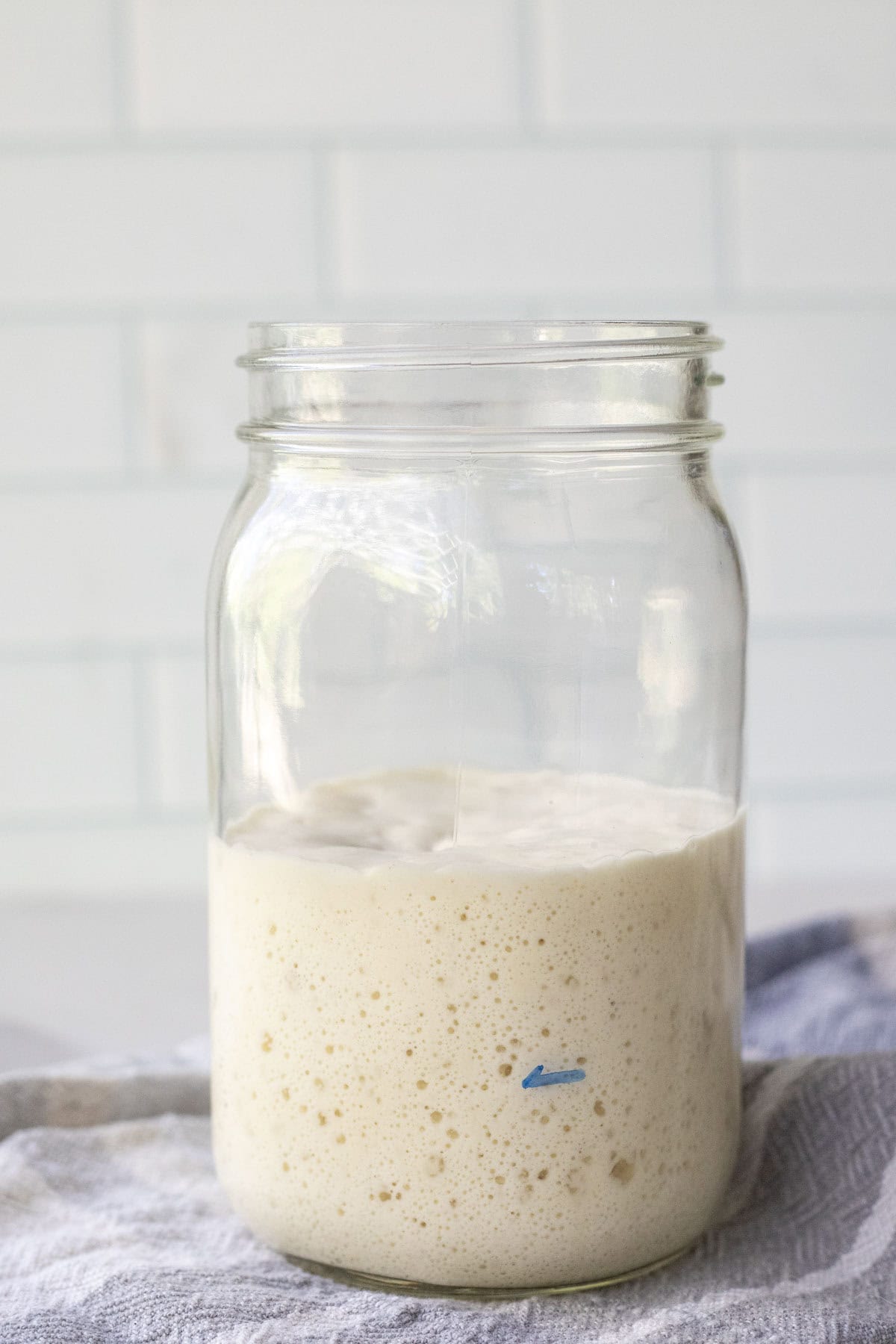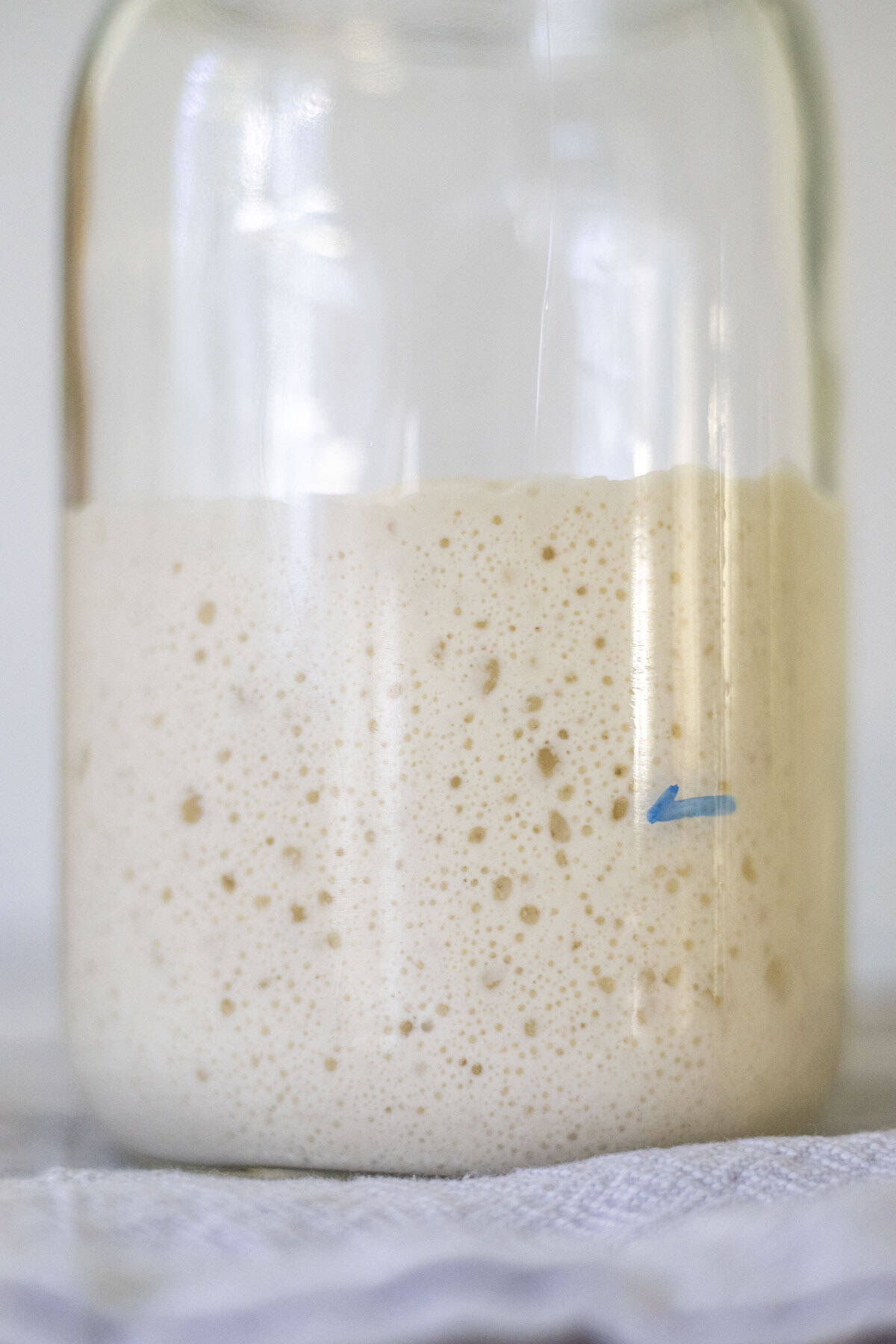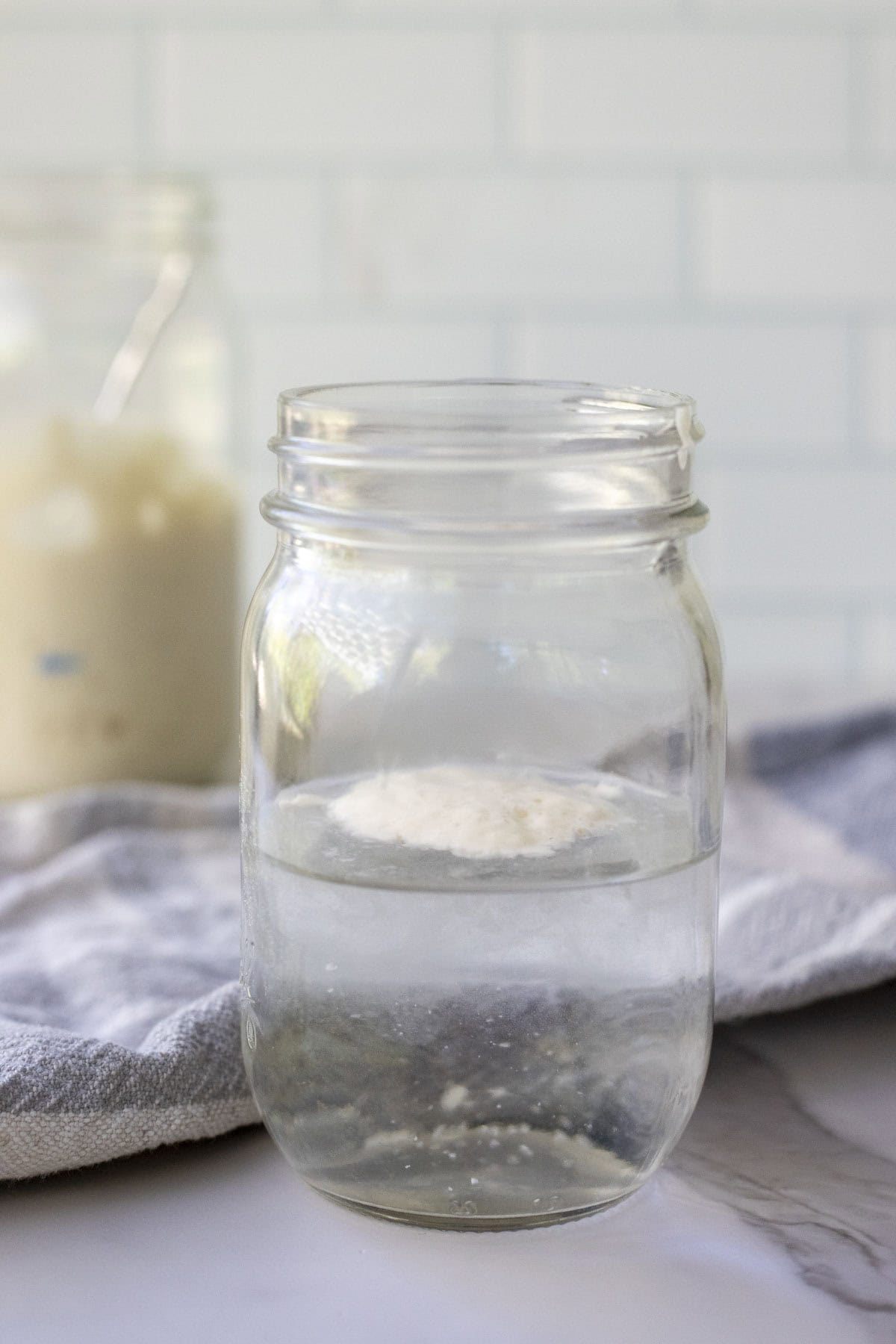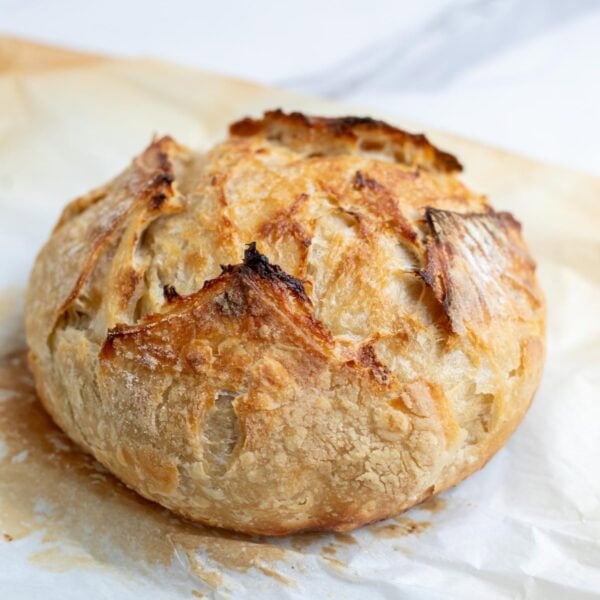This post provides answers to one of the most common questions for those beginning sourdough: “When is sourdough starter ready?”

Entering into the world of sourdough can be intimidating. It doesn’t sound remotely simple, and yet it’s exploded throughout the United States in recent years.
But why would it be called beginner’s sourdough bread if it isn’t for beginners? Aren’t these easy sourdough waffles and easy sourdough dinner rolls…easy?
You might start to wonder how easy it is when the sheer volume of information, tips, tricks, and advice suggests that maybe it is indeed quite complex.
Rest assured! There is plenty of helpful information available, and yet many new sourdough bakers will grasp it more easily by simply jumping right in.
Acquire a starter, or make your own sourdough starter, and follow a feeding schedule to get to know your new little dependent. For some guidance in this area, I have a post all about maintaining and feeding a sourdough starter.
But if you’re here, you’ve likely done just that.
This can be where hesitation strikes. You’ve got a happy starter, but now the next step requires interfering with the groove you’ve found.
I think it’s helpful to know that sourdough is less finicky than you think and far more forgiving than you might expect.
Just keep it fed, keep it comfy, and don’t stress over it.
So, if you’re ready to start baking easy buttermilk sourdough, soft multigrain sourdough, or jalapeno cheddar sourdough, it’s good to have some measure of assurance that your starter is active enough to give your recipe rise.
Signs of a Healthy, Ripe Sourdough Starter
Age
If you began your starter from scratch, it needs to be at least over one week old before using active starter in a recipe. (Remember, you can use discard right away in a discard recipe.)
That time is necessary for building up the yeast that is responsible for fermentation. Any earlier, and your recipe may not rise.
If you’ve received a starter from a friend, it’s a good idea to go ahead and feed it a time or two to ensure activity before use.

Bubbling and doubling
Visual cues are the best way to know that your starter is ready for use. An active sourdough starter rises to around double its original levels within 4-12 hours of feeding and will have lots of bubbles distributed throughout and on top of the starter.
This timeline is heavily dependent on the environment and maturity of your starter. A warmer location and a mature, healthy starter will respond within a shorter period, whereas cooler temperatures or a young starter may require more time.
Place a rubber band around your jar to mark the beginning level of your starter, then observe how far it rises above the band after feeding.
Smell
A good sign of readiness is a yeasty but mild, pleasantly sour aroma similar to yogurt. An active starter develops this scent during the fermentation process, while an unripe starter will have little to no smell as the good bacteria are still getting to work.
An “off” or foul odor is a sign that your starter has encountered a problem, and in this case, check out my post on moldy sourdough starter for help in diagnosing the issue.
Float test

An additional method of testing involves taking a small amount of starter, about a spoonful, and gently dropping it into a glass of water.
A ripe starter will float, revealing the presence of carbon dioxide bubbles in the mixture, which is the result of fermentation. If it sinks, it may not be ready yet.
It’s important to perform this test while your starter is at its peak. While the float test is not foolproof, it can be helpful.
Why Isn’t My Starter Ready?
If your starter did not bubble, double, or give off a signature sour aroma, there are a few reasons this might be:
Young starter
A new sourdough starter, less than a week old, may not present these indicators because it needs more time to develop and strengthen.
For best results, a starter should be at minimum one week old, though it is not considered a fully mature sourdough starter for several months.
Temperature is too hot or too cold
If kept at cold temperatures, your starter may be sluggish or unresponsive. This can typically be resolved by placing it in a warm location and continuing feedings.
If kept very warm, it’s also possible for your starter to over-ferment, causing the gluten structure to collapse and deflate. It should have the sourdough aroma to it, but it will look flat and runny rather than bubbly or airy.
Feeding schedule
A sourdough starter’s feeding schedule can impact its speed in rising. More frequent feedings and higher quantities of flour or water can encourage a quicker response.
On the other hand, infrequent or scant feedings can keep a starter sluggish. Sometimes, your feeding schedule does not match up to your baking schedule.
You might find that feeding your starter at a different time of day may put it at its peak in time for your baking needs, while if you’ve been feeding it too early, you may have been missing its peak.
Can I Speed Up My Sourdough Starter?
If your sourdough baking requires an active starter earlier than expected, there are a few methods to hurry things along.
- Warm water or even room temperature water, rather than cool water, can activate the natural yeasts more quickly. Avoid hot water, however, as it can kill the yeast.
- A warm, draft-free location, such as near a wood stove or heater, in the turned-off oven with the light on, on top of the refrigerator, on the kitchen counter above a running dishwasher, or placed in front of a sunny window.
- More frequent feedings can boost your starter’s activity. Try twice-daily feedings spaced 12 hours apart to spur a more responsive starter.
- Whole grain flours have an elevated wild yeast presence, triggering a quicker response. You can read my posts on rye starter, einkorn starter, and whole wheat sourdough starter to learn more about these options.
Refrigerated Sourdough Starter
Keeping your starter in the fridge is a great way to accommodate intermittent or infrequent baking. Refrigerating the starter slows down the activity of the yeast so that you don’t drown in constantly increasing sourdough.
- Refrigerated sourdough starter is essentially dormant, with the bacteria still working slowly and maintaining the starter’s ability to be revived.
- To use as an active starter, place it at room temperature, feed it, and observe for visual cues over the next 4 to 12 hours.
- Refrigerated starter should be fed equal parts of flour and water once a week as maintenance.
- Unfed starter from the refrigerator (also known as sourdough discard) can be used with great results in discard recipes like these quick discard pancakes, easy sourdough discard naan, sourdough discard pretzels, or these 20+ discard dessert recipes.
- Refrigerating your starter is also an option for long-term storage. It will last several months successfully if kept in an airtight container. It will likely produce a cloudy or dark liquid on top (called hooch) that is a sign of a neglected starter, but a few feedings at room temperature are usually enough to revive it. For more information, read my post about how to store sourdough starter.
Tips
- Use a non-porous container with good visibility to keep your starter in. I love a good glass jar to more easily observe my starter.
- Use unbleached flour and filtered water to avoid added chemicals like chlorine that can interfere with fermentation.
FAQ
The short answer is no, but the full answer depends on the type of starter and flour you use. Sourdough can be gluten-free, but it isn’t generally. If you are gluten intolerant, this makes all the difference, so check out my post Is Sourdough Bread Gluten-Free? to learn more.
Your recipe will not rise or have sourdough flavor, and the crumb will likely be very dense. It’s similar to baking a yeast recipe without the yeast.
Within 4 to 12 hours after feeding, your starter should look fuller, airy, and increasingly bubbly.
Sourdough starter is typically ready within 4 to 12 hours after feeding. Many factors contribute to this timeframe, including the maturity of the starter, temperature, and how much it has been fed.
It’s a good idea to do so. If you don’t discard, your starter will simply continue to multiply, which can become overwhelming. I keep my sourdough discard in a jar in the refrigerator to use in all kinds of sourdough discard recipes.










Thank you so much for all your advice- I sometimes forget and enjoy re-learning about sourdough 🌟
Again thank you